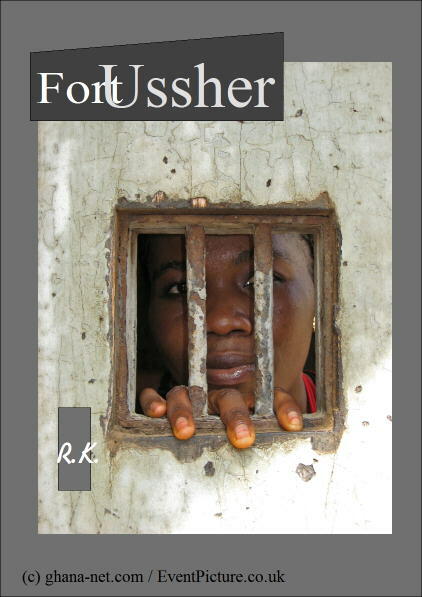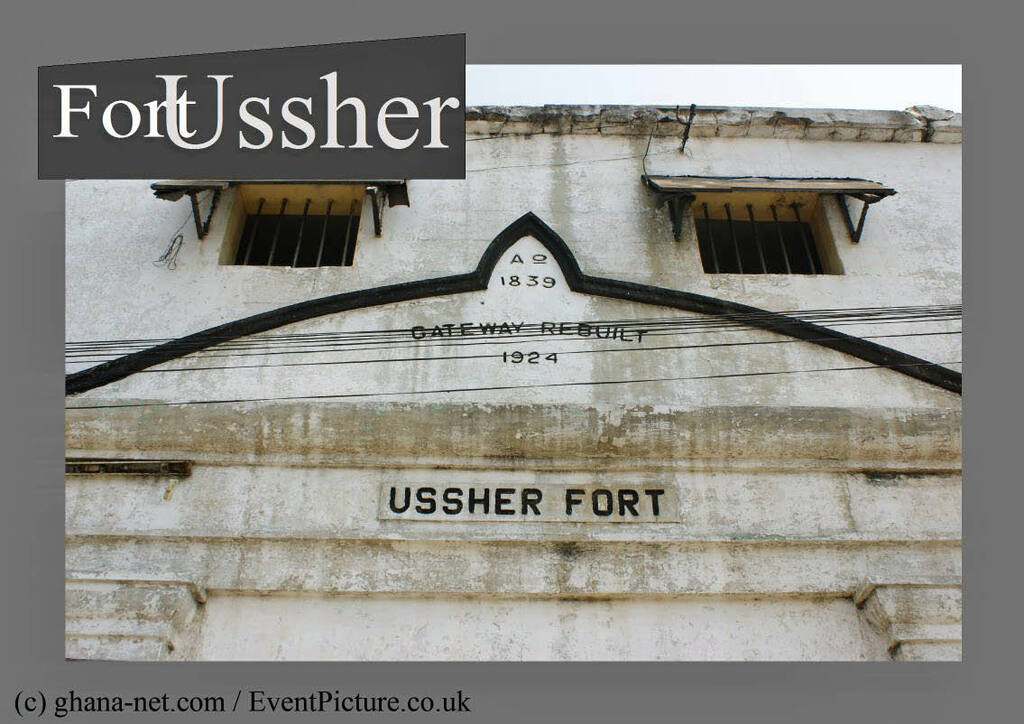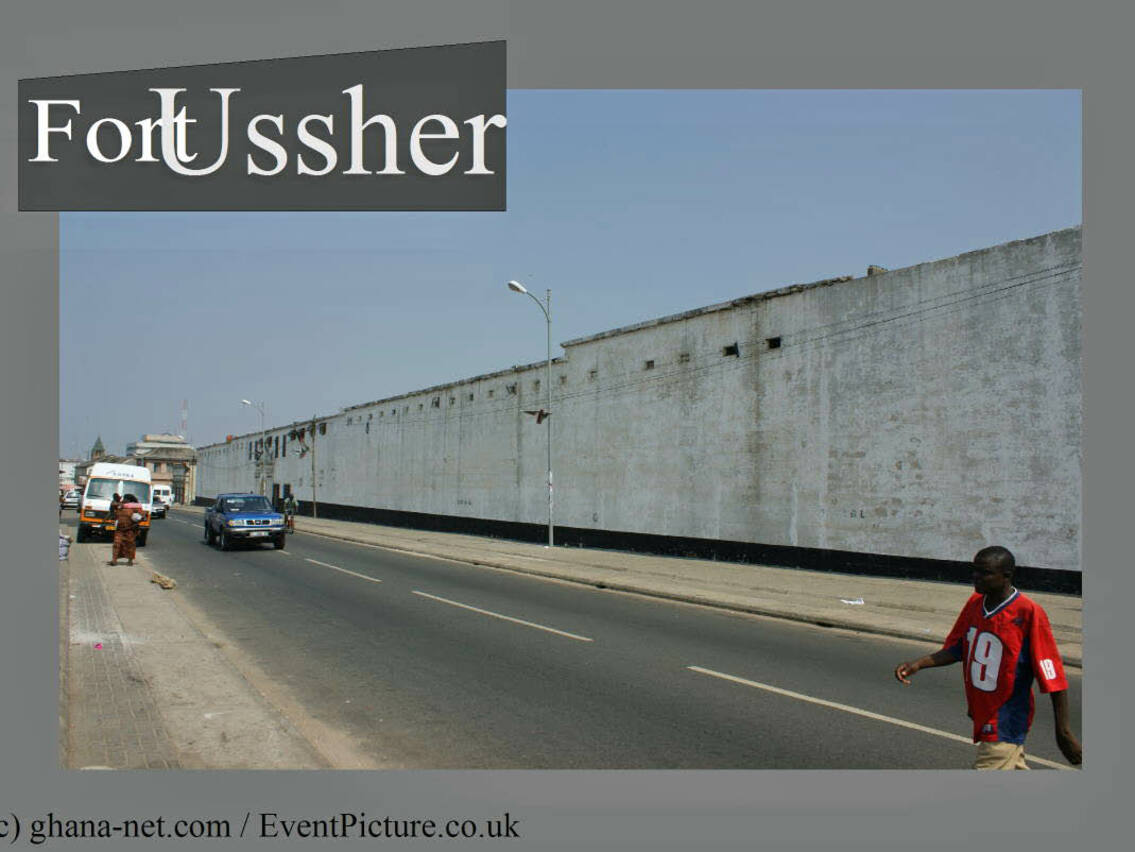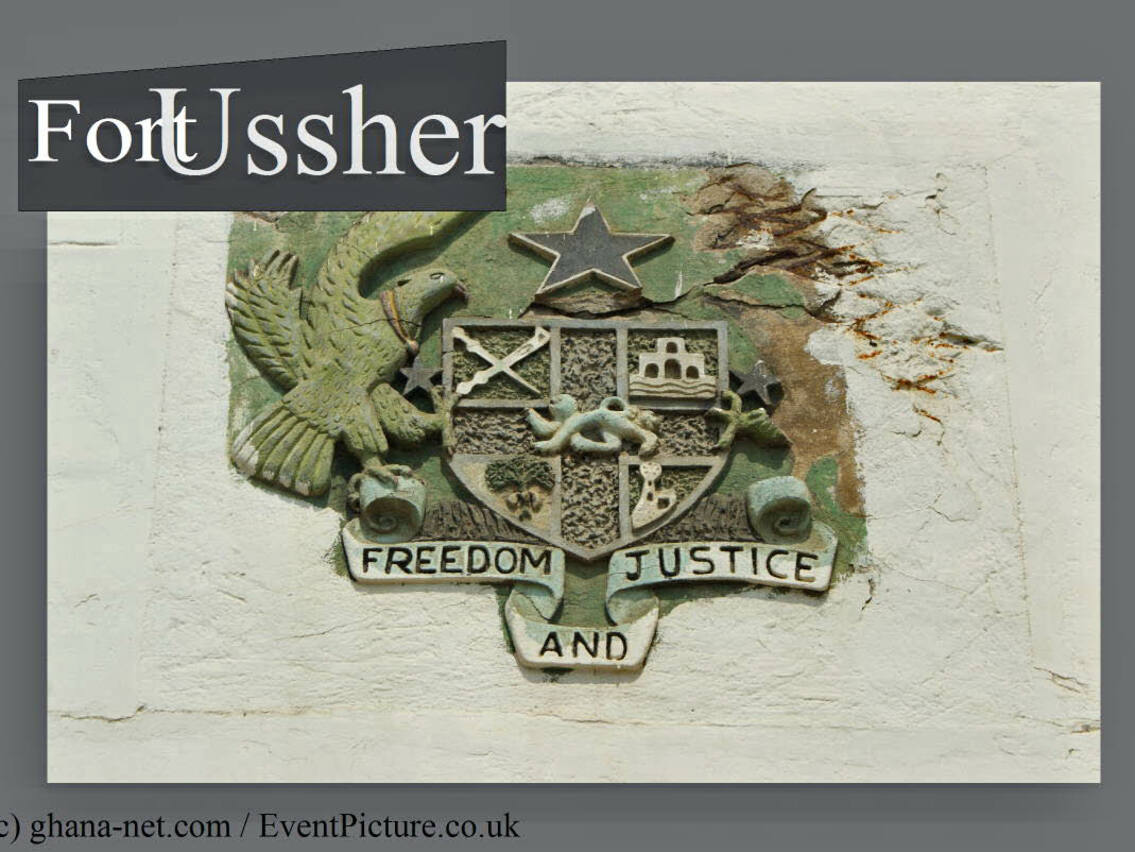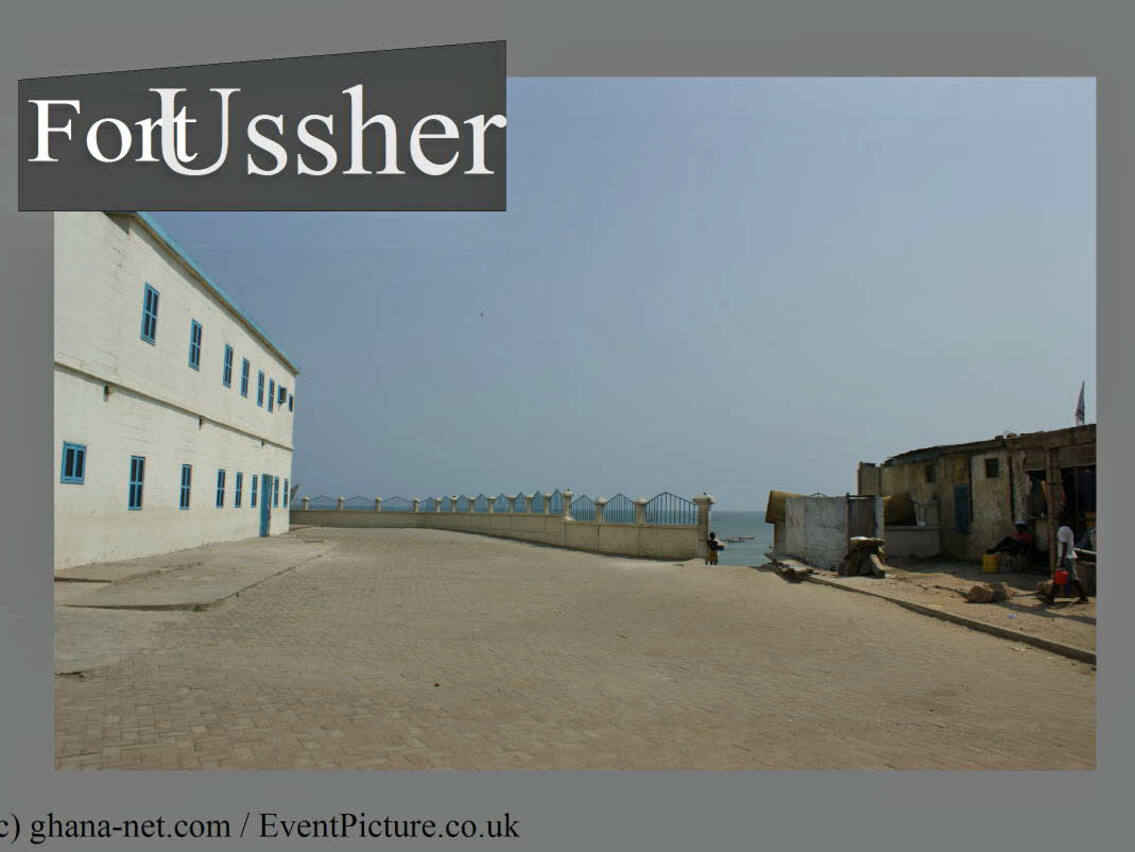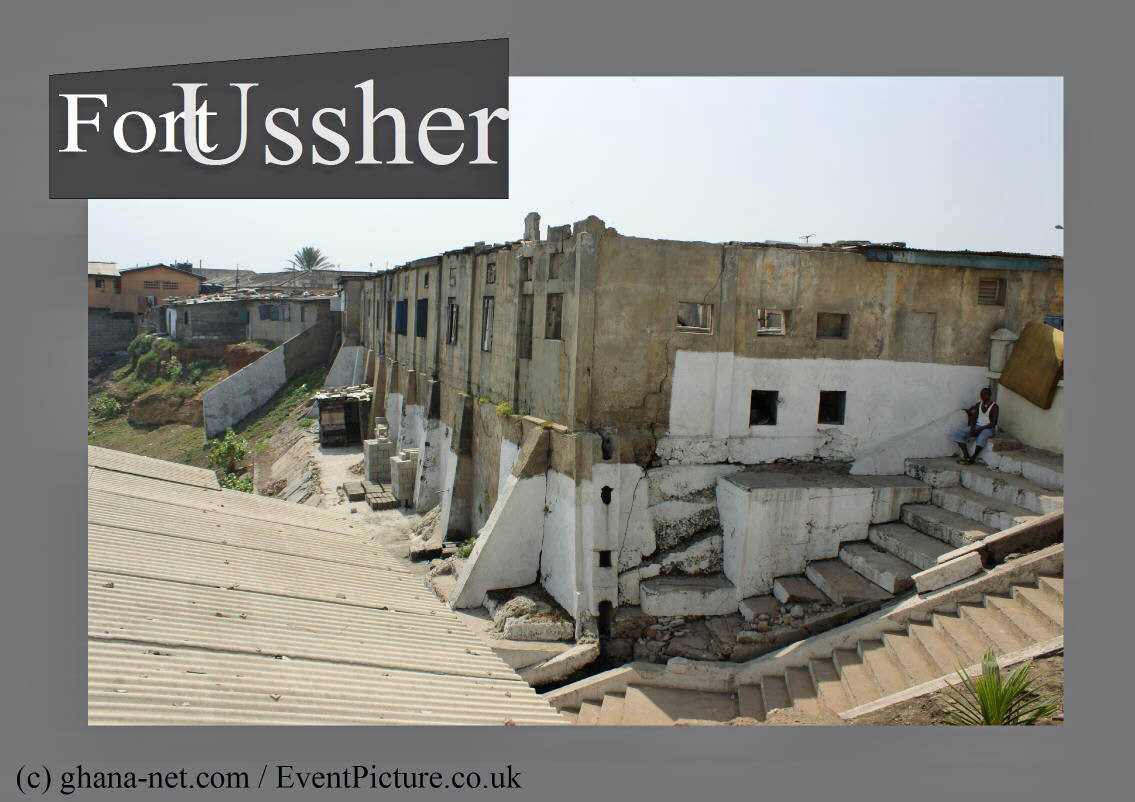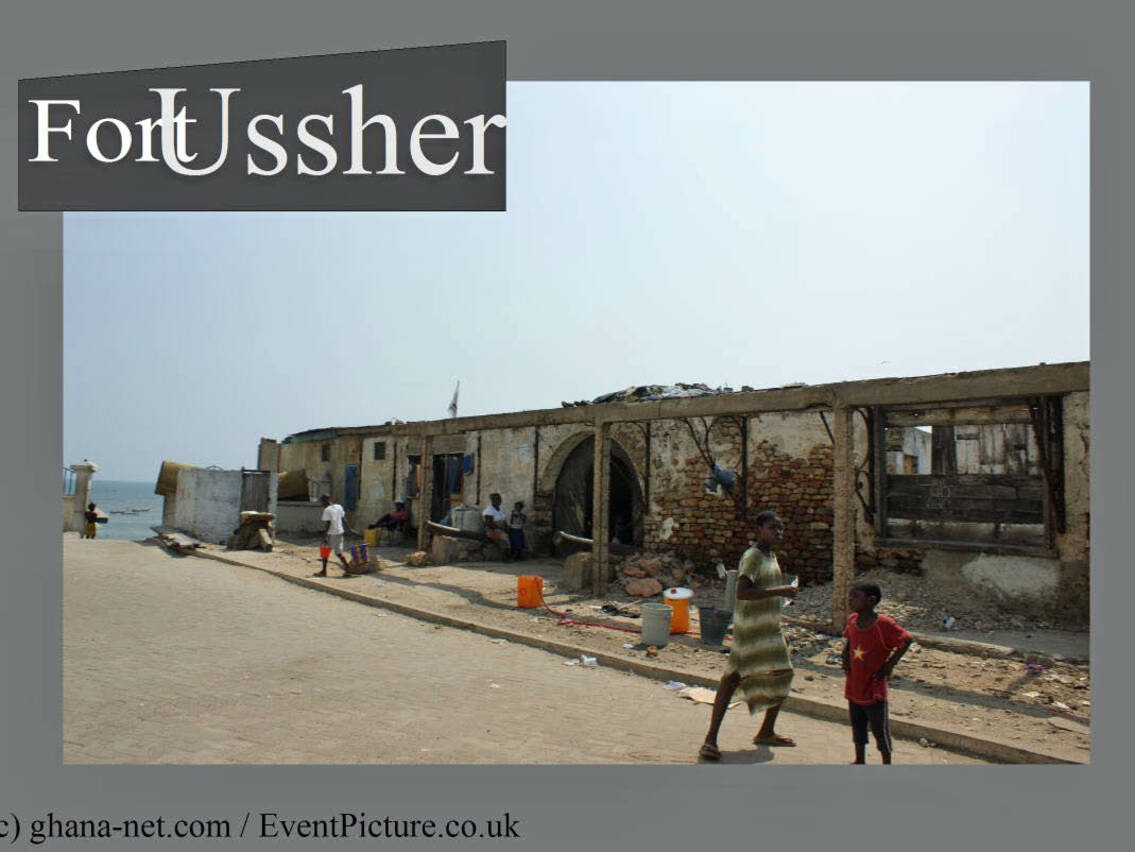Fort Ussher: A Historical Overview
Fort Ussher: A Historical Overview (Audio) - You may listen or read below.

(c) Remo Kurka photography / View inside a cell block, build by the British, during British Gold Coast
The fort was part of a triad of European forts in the region, alongside Fort James (British) and Christiansborg Castle (Danish), all built to dominate trade routes and coastal territories in what was then referred to as the Dutch Gold Coast.

Graffiti Painting on a cell wall. Probably created by Liberians refugees, who were placed at Ussher Fort, during the time of war in Liberia. You wont see this there at the moment, as it is covered up by some find of wooden display shelf.
As a result of this treaty, Fort Crèvecœur was ceded to the British, who renamed it Fort Ussher, likely in honor of Herbert Taylor Ussher, a British administrator in the Gold Coast at the time.
Function under British Rule - Under British rule, Fort Ussher evolved from a trading post into a colonial administrative outpost and military installation.
At various times, it also served as a prison, particularly during the colonial period and extending into the post-independence era. The prison garnered a reputation for harsh conditions, housing many prominent political prisoners, including Kwame Nkrumah prior to independence.
Fort Ussher and Ussher Town are powerful reminders of Ghana’s layered history—marked by trade, colonization, resistance, and cultural continuity. The fort itself stands as a monument to the era of European imperialism, the transatlantic slave trade, and colonial military control. Ussher Town, in contrast, reflects the dynamic and adaptive spirit of the Ga people, who have weathered centuries of foreign intervention while maintaining their identity.
Their story is not just one of historical interest, but of ongoing relevance, as debates about heritage preservation, urban development, and cultural survival continue to shape the future of Accra’s oldest neighborhoods.
